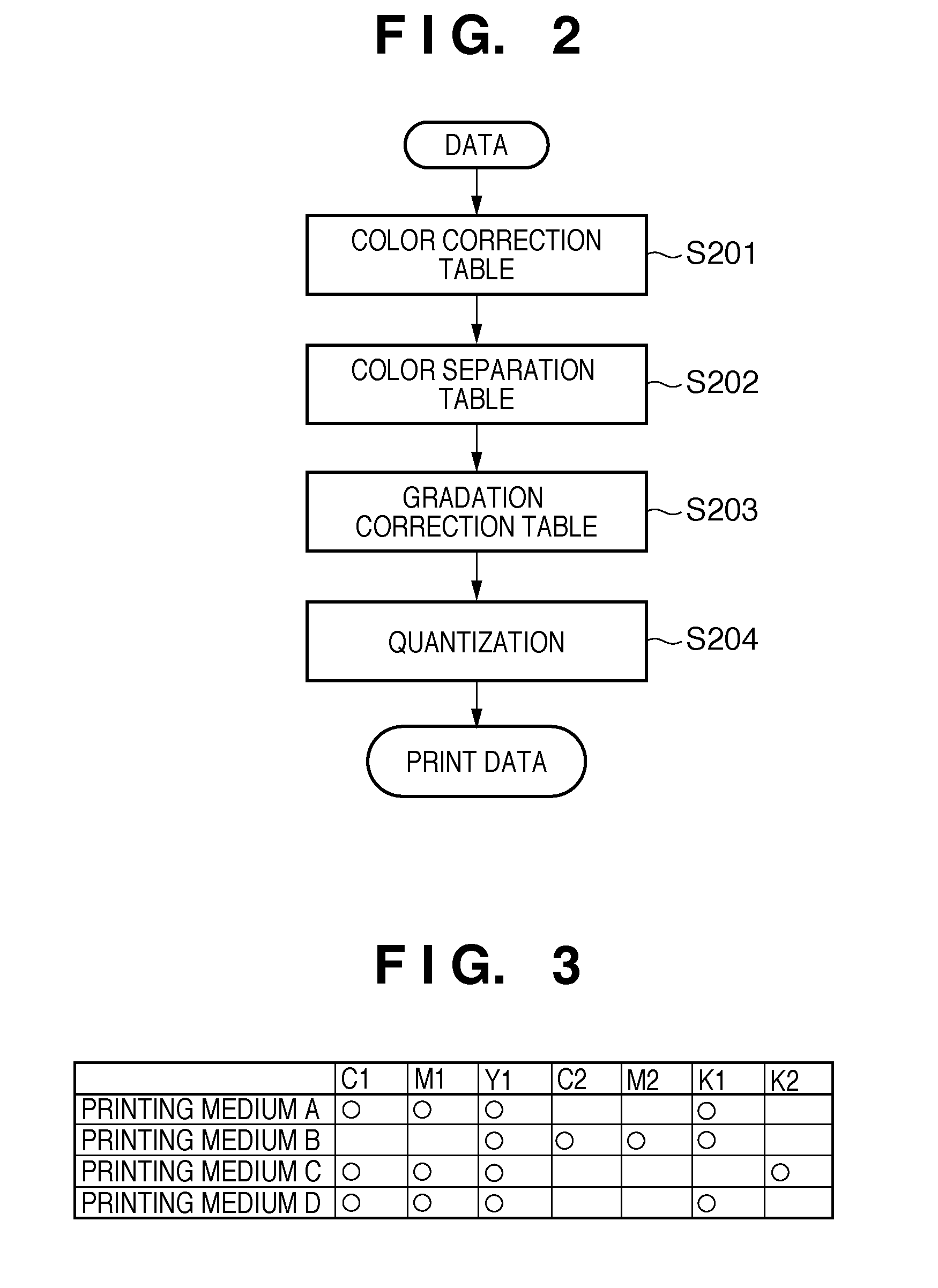Image correction system and image correction method
a technology of image correction and image correction, applied in the field of image correction system and image correction method, can solve the problems of image degradation, undesirable computation of calibration information, and inhibiting the effective use of up-to-date information for some types of inks
- Summary
- Abstract
- Description
- Claims
- Application Information
AI Technical Summary
Benefits of technology
Problems solved by technology
Method used
Image
Examples
first embodiment
[0034]FIG. 1 is a diagram illustrating an example of a configuration of an image correction system. An information processing apparatus 100 includes a CPU 101, a ROM 102, a RAM 103, and a video card 104 that provides connection to a monitor 114 (which may include a touch panel). It further includes a storage device 105 serving as a storage area, such as an HDD (hard disk drive) or a memory card. The apparatus also includes an interface 108 for a serial bus such as USB or IEEE 1394 to provide connection to a pointing device 106 such as a mouse, a stylus, or a tablet and to a keyboard 107. The apparatus further includes a network interface card (NIC) 116 that provides connection to a network 115. These components are connected to one another via a system bus 109. The interface 108 can establish connection with a printer 110 such as an inkjet printer that serves as an image forming apparatus, a digital camera 111, a colorimeter 112, a scanner 113, and so on.
[0035]The CPU 101 loads a pr...
second embodiment
[0069]A second embodiment describes the case where the relationship between printing media and available inks are different from those described in the first embodiment. FIG. 12 illustrates the relationship between printing media and available inks according to the present embodiment. White circles in the figure represent the available inks for each printing medium. In the present embodiment, cyan ink (C1), magenta ink (M1), yellow ink (Y1), and black ink (K1) are used for both printing media, whereas red ink (R) and green ink (G) are used for only the printing medium E. The printing medium A is printed with C1, M1, Y1, and K1, and the printing medium E is printed with C1, M1, Y1, K1, R, and G. R ink and G ink have the feature that they are used neither on the gray axis nor in skin color areas and are used in only highly saturated red and green color areas.
[0070]Next, a combination of printing media A and E is described with reference to FIGS. 13 and 14. Although some of the inks, n...
third embodiment
[0072]The first and second embodiments have been described on the premise that calibration information on every chromatic color ink that satisfies the condition that available inks for each printing medium are always included in a history. However, calibration information that satisfies such a condition may not always be included in a history. Or the following case is also conceivable, i.e., even if included in a history, calibration information may have been acquired at a time that is older than a predetermined time and thus may not be usable in the production of a sufficient correction effect. An example of such a case is described.
[0073]The calibration-information-acquiring step is as described in the first embodiment. Described below is a step of correcting and printing output using acquired calibration information. First, in step S501, a printing medium to be used for printing and the print quality thereof are specified by a user. Then, in step S502, the most up-to-date time wh...
PUM
 Login to View More
Login to View More Abstract
Description
Claims
Application Information
 Login to View More
Login to View More - Generate Ideas
- Intellectual Property
- Life Sciences
- Materials
- Tech Scout
- Unparalleled Data Quality
- Higher Quality Content
- 60% Fewer Hallucinations
Browse by: Latest US Patents, China's latest patents, Technical Efficacy Thesaurus, Application Domain, Technology Topic, Popular Technical Reports.
© 2025 PatSnap. All rights reserved.Legal|Privacy policy|Modern Slavery Act Transparency Statement|Sitemap|About US| Contact US: help@patsnap.com



